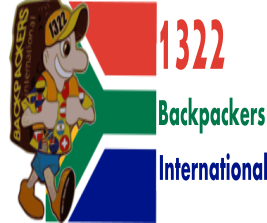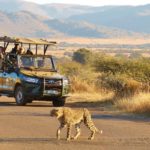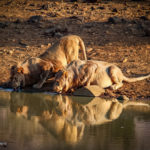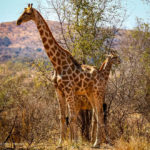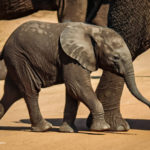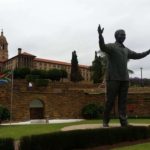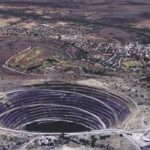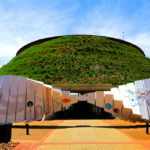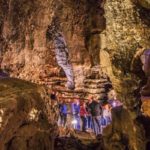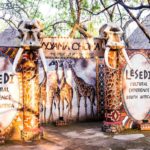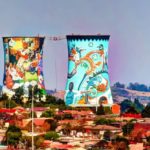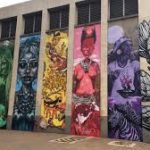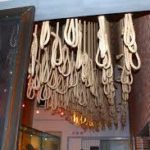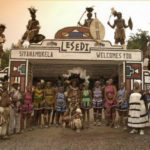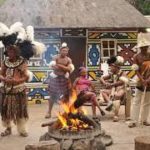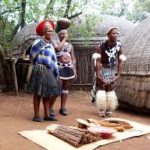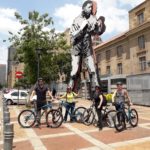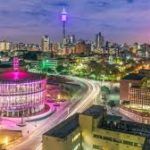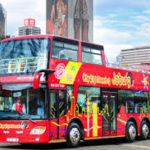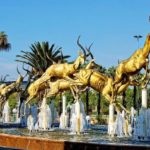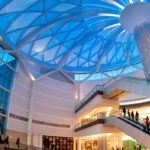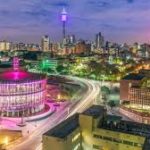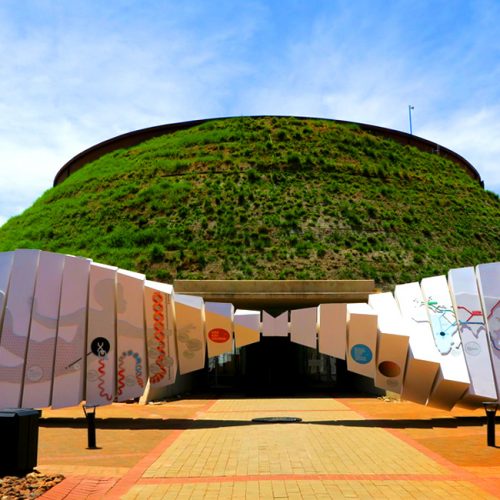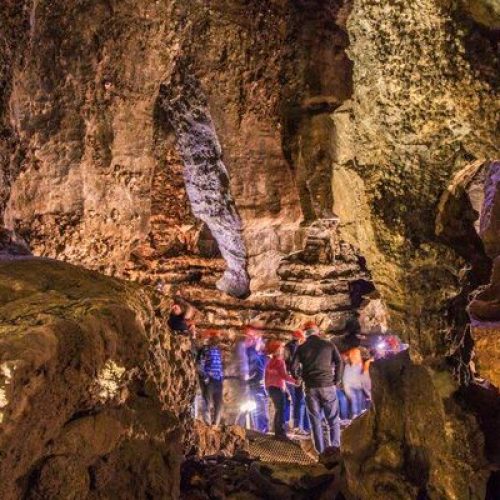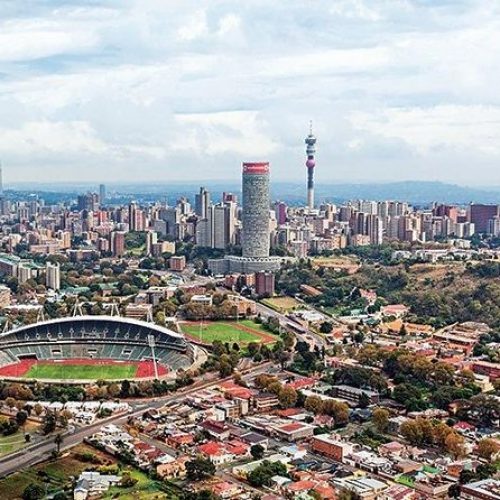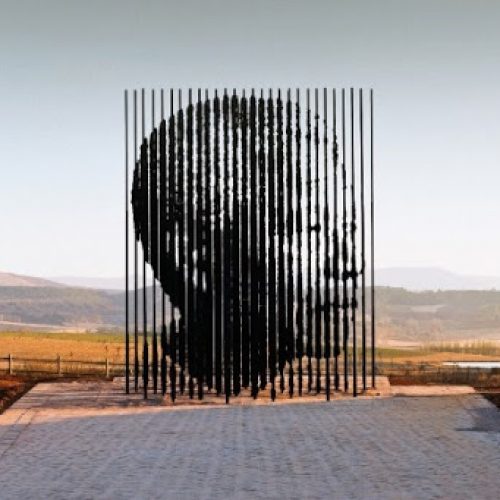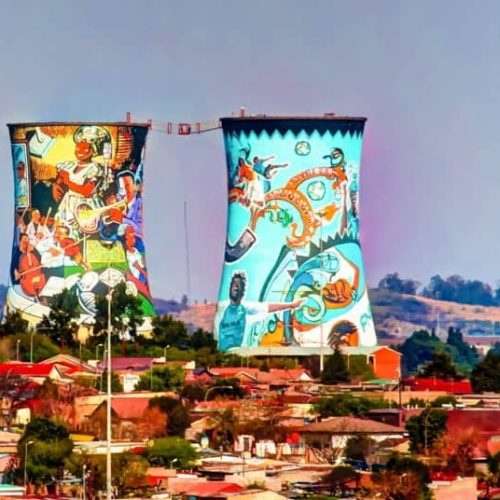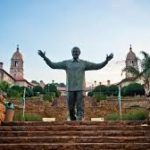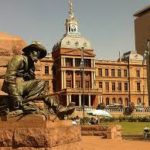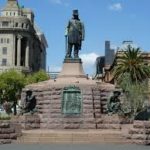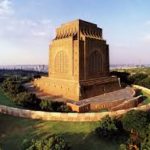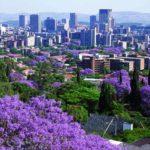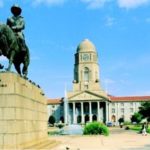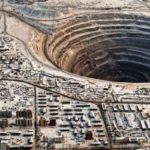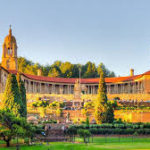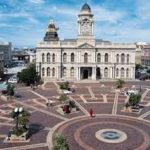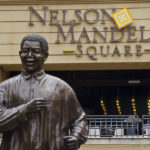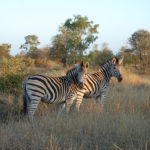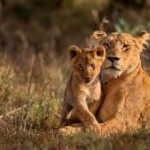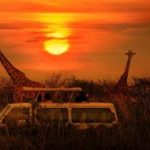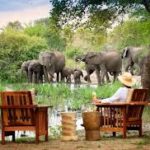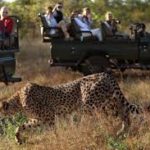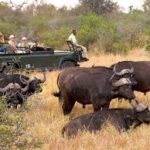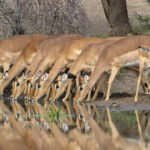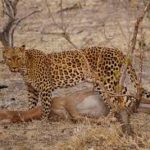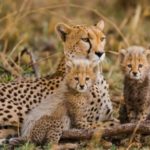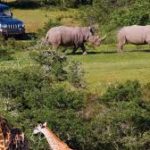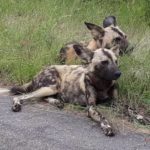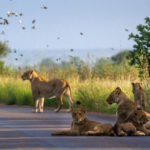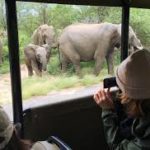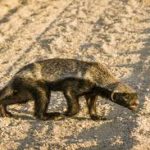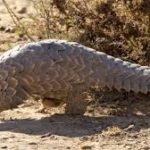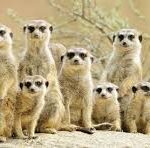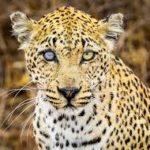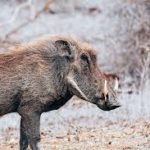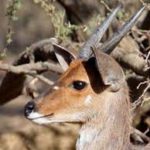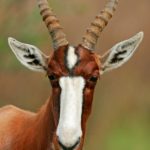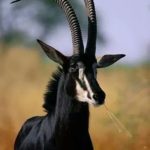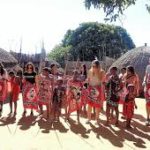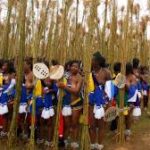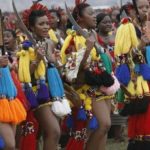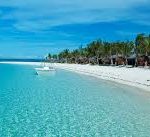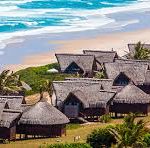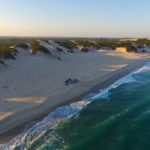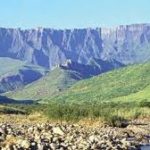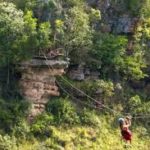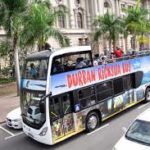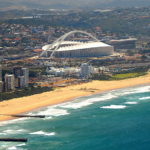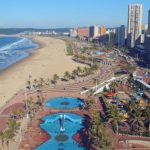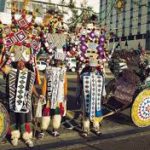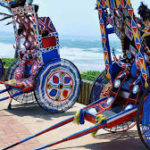Tours
Choose your own adventure!!!
We provide tours to Pilanesberg National park and to Mabalingwe Nature Reserve
We pride ourselves not only for you to have the advantage of local knowledge and experience but also in dealing directly with the Operator.
We offer Day Tours, Overland Tours and Safari Tours all over Southern Africa. We also have a special Volunteer Tour.
Customer Service
We understand customer service is essential today, rapid responses and listen to what the client wants is essential to us for putting the right package together. We prefer to go the extra mile to deliver an unforgettable vacation.
Prices
With such a competitive world out there, which is always a good thing for us as it forces us to do our best. This makes us work harder to find the best possible quality/value for money that you are getting.
Flexibility
We know booking a vacation can be stressful. We can adapt the itinerary, be it before departure or while on tour. Booking far in advance? We can be flexible with our payment terms.
Tours
Have a tight budget, short on time or a particular interest? We will find the right tour for you. We love Africa and its Wildlife, Safaris, History, Culture and Outdoor life. Be it on a Day Tour or our longer Overland Tours. With our selected crew we will give you an experience that will never be forgotten.
Day Trips
- Pick Up and Drop off at Hotel
- Entrance Fee
- TRIPS FROM R750 pp
Jo'Burg Tours
What to expect on this tour.
This day tour brings enjoyment to the whole family and the solo traveler. Visiting 1 of 8 Unesco’s World Heritage Sites in South Africa. Including a Underground cave Tour and a Boat Ride. The Cradle of Humankind covering the region of Sterkfontein, Swartkrans, Kromdraai and environs has one of the world’s richest concentrations of hominid fossils, evidence of human evolution over the last 3.5-million years.
🎯 Starts with being collected at your Hotel in the morning, we make our journey towards the Sterkfontein caves situated 1 hour from Johannesburg and Pretoria.
🎯The Sterkfontein Caves are world-famous for their fossil finds and are a popular visitor destination.
🎯The tour at the Sterkfontein Caves, starts above ground and then take visitors deep into the caves.
🎯Once we finished with the cave tour we head over to Maropeng Visitor Centre which is an award-winning, world-class exhibition, focusing on the development of humans and our ancestors over the past few million years.
🎯The Maropeng tour starts with a unique boat trip that depicts the history of the planet, via a series of waterways.
🎯Take a journey through time, starting with the formation of the planet and moving all the way through the evolutionary processes that culminated in the world as we know it today.
🎯See fossils, learn about how humankind was born, view stone tools that are up to one million years old, and much more. This self-guided, interactive tour allows you to take all the time you need to ponder humanity’s fascinating origin story.
🎯 Before we head back to your hotel enjoy lunch on site.
What to expect on this tour.
This day tour brings enjoyment to the whole family and the solo traveler. Visiting 1 of 8 Unesco’s World Heritage Sites in South Africa. Including a Underground cave Tour and a Boat Ride. The Cradle of Humankind covering the region of Sterkfontein, Swartkrans, Kromdraai and environs has one of the world’s richest concentrations of hominid fossils, evidence of human evolution over the last 3.5-million years.
🎯 Starts with being collected at your Hotel in the morning, we make our journey towards the Sterkfontein caves situated 1 hour from Johannesburg and Pretoria.
🎯The Sterkfontein Caves are world-famous for their fossil finds and are a popular visitor destination.
🎯The tour at the Sterkfontein Caves, starts above ground and then take visitors deep into the caves.
🎯Once we finished with the cave tour we head over to Maropeng Visitor Centre which is an award-winning, world-class exhibition, focusing on the development of humans and our ancestors over the past few million years.
🎯The Maropeng tour starts with a unique boat trip that depicts the history of the planet, via a series of waterways.
🎯Take a journey through time, starting with the formation of the planet and moving all the way through the evolutionary processes that culminated in the world as we know it today.
🎯See fossils, learn about how humankind was born, view stone tools that are up to one million years old, and much more. This self-guided, interactive tour allows you to take all the time you need to ponder humanity’s fascinating origin story.
🎯 Before we head back to your hotel enjoy lunch on site.
- ➽Collection from Hotel
- ➽Transfer in Comfortable Vehicle
- ➽Entrance to Sterkfontein Caves
- ➽Guided Tour of Sterkfontein Caves
- ➽Entrance to Maropeng
- ➽Return to Hotel
- ➽Collection from Hotel
- ➽Transfer in Comfortable Vehicle
- ➽Entrance to Sterkfontein Caves
- ➽Guided Tour of Sterkfontein Caves
- ➽Entrance to Maropeng
- ➽Return to Hotel
Enjoy an authentic African experience
Located less than an hour from the city in the heart of the African bushveld set amidst the rocky hills within the Cradle of Humankind, a World Heritage Site.
Lesedi Cultural Village is unique. Expect an excellent and authentic African experience in the country, one that provides warmth, depth and insight into South Africa’s colourful diversity of cultures.
Listen to the traditional music being played and the fascinating stories told by the people of Lesedi.
- 🎯 Upon a arrival you will be welcomed by the people of Lesedi.
- 🎯Discover the fascinating cultures and traditions of the people of Africa, visiting 5 traditional homesteads inhabited by Zulu, Xhosa, Pedi, Basotho and Ndebele tribes who live according to tribal folklore and traditions of their ancestors.
- 🎯Hear fascinating stories told, about their individual cultures and rituals of daily life.
- 🎯Enter the Ingoma – the dance boma, and enjoy a local South African tribal get-together experiencing some traditional dancing.
This is followed by an African feast (optional).
After the traditional dance we head to the Nyama Choma restaurant. Nyama Choma stands for Great African Feast. And that’s exactly what you will experience! There is an extensive choice of African dishes, including Crocodile and Ostrich.
Where the term “Rainbow Nation” originated
When South African icon Archbishop Emeritus Desmond Tutu first christened South Africa the “Rainbow Nation”, he was referring particularly to its peoples and their varying cultures. From Zulu people to those of Xhosa origin, to the Afrikaners, the English and the Coloured people of the Cape, South Africa has a rich diversity of people and cultures and 11 official languages. Lesedi Cultural Village is one of the best tourist attractions in South Africa, allowing visitors to really explore the glorious diversity of the people of this land.
There’s a craft market for last-minute curios and handmade local arts and crafts.
🎯First show: 11:30am – 13:30pm/14:30pm (with lunch) (please not this is not the departure time from your Hotel)
🎯Second show: 16:30pm – 18:30pm/19:30pm (with dinner) (please not this is not the departure time from your Hotel)
Jo’burg Ultimate
- Starts by being collected from your hotel in the morning. Transferred to the City Sightseeing Bus of Johannesburg, explore and discover the Carlton Center, Constitution Hill in a safe, fun, educational and convenient way. It could not be any easier to get to Johannesburg’s top attractions.
- Then we visit The Apartheid Museum that opened in 2001 and is acknowledged as the pre-eminent museum in the world dealing with 20th century South Africa, at the heart of which is the apartheid story.
- Before entering Soweto we pass by the National Football Stadium where the opening and closing ceremony of the 2010 Soccer World Cup took place.
- Taking us into the suburb of Diepkloof passing by the Chris Hani Baragwanath Hospital, Soweto Campus of the University of Johannesburg and the Orlando Towers.
- Making our way to Orlando West where you will have the opportunity to read about the Soweto uprising of the June 16, 1976 in the Hector Pieterson Museum.
- In Orlando West we visit Vilakazi Street, passing homes of 2 noble peace prizes winners who once lived in the same street. Home of Archbishop Desmond Tutu and former home of Nelson Mandela.
Optional visit into the Mandela House Museum.
Visit our Half Day Soweto Tour or our Soweto and Apartheid Museum Tour.
The Apartheid Museum
The Apartheid Museum, the first of its kind, illustrates the rise and fall of apartheid.
An architectural consortium, comprising several leading architectural firms, conceptualised the design of the building on a seven-hectare stand. The museum is a superb example of design, space and landscape offering the international community a unique South African experience.
The exhibits have been assembled and organised by a multi-disciplinary team of curators, film-makers, historians and designers. They include provocative film footage, photographs, text panels and artefacts illustrating the events and human stories that are part of the horrific period in our history, known as apartheid.
Soccer City Stadium
This iconic 87 436 seats, is the largest venue in South Africa and the country’s proud global colossal located in Nasrec, south of Johannesburg.
The unique design of FNB Stadium is highly regarded internationally, and is often fondly referred to as the “Calabash” or “African Pot” after being reconstructed to the tune of R 3.3 billion in time for the first ever African Soccer World Cup in 2010.
Previously known as Soccer City, the stadium has been the centre of historic events, starting with the first speech from former President Nelson Mandela in 1990, a few days after being released from prison where he served 27 years.
The venue has hosted the biggest sports and music events this country has ever seen, including the opening and closing ceremonies as well as the final of the 2010 FIFA World Cup. The continental Africa Cup of Nations final in 2013 was also played at the stadium.
Chris Hani Baragwanath Hospital
The 3rd largest Hospital in the world and being the largest in Africa.
Orlando Towers
Has become one of the most distinctive landmarks in the neighbourhood of Soweto. The power station was shut down in 1998 and was transformed into an entertainment and business centre in 2008.
Vilakazi Street
Vilakazi Street is the Soweto street of the greats, named after Dr Benedict Wallet Vilakazi, a distinguished writer and educator who wrote the first poetry book published in Zulu.
The homes of two Nobel Peace Prize laureates – South Africa’s first democratically elected president, the late Nelson Mandela, and Archbishop Emeritus Desmond Tutu – are found on Vilakazi Street. This is the only street in the world that can boast having had two Nobel Laureates as residents.
Hector Pieterson Museum
In the early 1990s, the Hector Pieterson Memorial was erected on Khumalo Street in Soweto, not far from where Pieterson was shot, commemorating all those who died or were injured that day and June 16 became the National Youth Day public holiday.
On June 16, 2002, the Hector Pieterson Museum opened next to the memorial. Dedicated to preserving the memory of the 1976 uprising and the events surrounding it, the museum contains a moving collection of oral testimonies, pictures, audiovisual displays and historical documents relating to the events of 1976.
By now you will have seen the good, the bad and the ugly side of Soweto. After visiting the memorial that concludes our half day Soweto tour and we make our way back to your Hotel passing by some of shanty towns exiting Soweto.
- ➽Welcome and Introduction to Lesedi
- ➽Insight into 5 South African Cultures
- ➽Stories and Tribal Folklore
- ➽Zulu, Xhosa, Pedi, Basotho and Ndebele tribes
- ➽Traditional Song and Dance
- ➽Optional African Feast
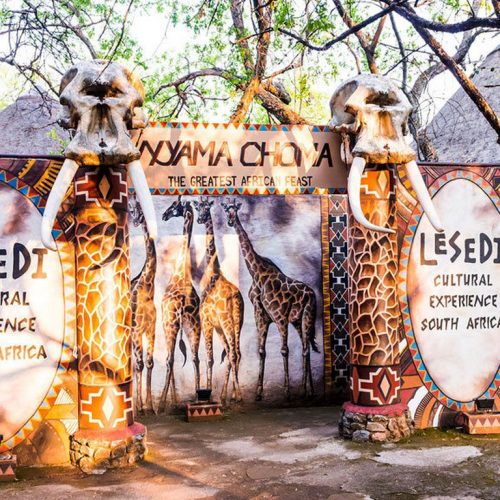
- ➽City Sightseeing Bus
- ➽Apartheid Museum
- ➽Tour of Soweto
- ➽Soccer City Stadium
- ➽Chris Hani Baragwanath Hospital
- ➽Orlando Towers
- ➽Vilakazi Street
- ➽Hector Pieterson Museum
The Apartheid Museum, the first of its kind, illustrates the rise and fall of apartheid.
An architectural consortium, comprising several leading architectural firms, conceptualised the design of the building on a seven-hectare stand. The museum is a superb example of design, space and landscape offering the international community a unique South African experience.
The exhibits have been assembled and organised by a multi-disciplinary team of curators, film-makers, historians and designers. They include provocative film footage, photographs, text panels and artefacts illustrating the events and human stories that are part of the horrific period in our history, known as apartheid.
A vibrant township steeped in history and culture of the Johannesburg Metropolitan Municipality located in Gauteng, South Africa, bordering the city’s mining area in the south portion. Previously a different municipality, it is presently fused in the City of Johannesburg Metropolitan Municipality. It turned into an autonomous municipality with chosen Black councilors in the 1983, in accordance with the Black Local Authorities Act.
Pretoria Tours
The Half Day Pretoria Scenic Tour
- 🎯After collecting you from your Hotel in Johannesburg or Pretoria. We make our way to Pretoria, being the Administration Capital of South Africa is steeped in history. It’s not a mere coincidence that Pretoria is called the “Jacaranda City”. During the blooming season, late September to November the city turns purple with 70,000 blooming trees.
- 🎯Our first stop is the Voortrekker Monument. This massive granite structure is prominently located on a hilltop, and was built to commemorate the Voortrekkers who left the Cape Colony between 1835 and 1854.
- 🎯Here you will learn about the history of the Afrikaner. Climbing the 169 stairs to the top provides you with a beautiful overview of the city of Pretoria. Not feeling like stairs not to worry there is a lift.
- 🎯We then make our way downtown passing Melrose House, Kruger House and Church Square. Pretoria has over the years had very diverse cultural influences and this is reflected in the architectural styles that can be found in the city.
- 🎯Ranging from 19th century Dutch, German and British colonial architecture to modern, postmodern, neomodern, and art deco architecture styles with a good mix of a uniquely South African style.
- 🎯Moving onto the Union Buildings headquarters of the government. Here you can stretch your legs in the beautiful gardens and see the impressive statue of Nelson Mandela. One of South Africa’s national heritage sites. Made out of bronze, the 9m tall statue weighs 3.5 tons. Having a “wingspan” of 8m from finger tip to finger tip.
- 🎯Ending the tour we pass by the local Stadium used in the 2010 World Cup. Loftus Versfeld is the home ground of Super Rugby and Absa Currie Cup giants the Blue Bulls and leading PSL football team Mamelodi Sundowns. Which has a capacity of more than 50 000 and is frequently used to host large-scale Rugby and Soccer matches.
Optional visit into the Kruger House Museum.
The Voortrekker Monument
Situated in the northern part of Pretoria (Tshwane) region in a nature reserve. It is a unique Monument which commemorates the Pioneer history of Southern Africa and the history of the Afrikaner and is situated in a beautiful setting. The Monument was inaugurated in 1949. It was designed by architect Gerard Moerdijk. In the Hall of Heroes is the world’s longest historical marble frieze. A tapestry with more than three million stitches is housed in the Cenotaph Hall.
Melrose House
The house played an important role during the Anglo-Boer Wars, and is the site of the signing of the peace treaty that ended the 2nd Anglo-Boer war.
Kruger House
Built for the Kruger Family in the 19th-century, Afrikaans leader and Transvaal President Paul Kruger, which Kruger National Park is named after.
Church Square
Surrounded by historical buildings in varying neo-classical architectural styles, including the impressive Palace of Justice where former president Nelson Mandela and several of his comrades were tried and charged for treason during the infamous Rivonia Trial, the Old Capitol Theatre and the Ou Raadsaal (Old Government) building.
Pretoria’s Union Buildings
The official seat of the national government, house the offices of the South African president and are located atop the Meintjieskop in the Arcadia suburb of Tshwane. An important South African heritage site. The impressive building is surrounded by pretty terraced gardens that offer great panoramic views over the city. Within the gardens you’ll find various monuments to important historic South African figures, including a monument of General Louis Botha riding his horse and an imposing 9 m-tall bronze statue of Nelson Mandela that was unveiled here just after his death in 2013. An idyllic walk through the gardens is a must.
Cullinan Diamond Mine has given the world some of the most remarkable stones ever discovered.
Located in the Victorian town named after it’s most famous resident, Cullinan is a breathtaking 45-minute drive from South Africa’s capital, Pretoria.
Renowned as a source of large, high-quality gem diamonds, including Type II stones, as well as being the world’s most important source of very rare blue diamonds.
Cullinan earned its place in history with the discovery of the Cullinan diamond in 1905, the largest rough gem diamond ever found at 3,106.75 carats was found only a mere 9 m from the surface.
The jewel was named after the mine’s owner and sold to the South African government who presented it to King Edward VII on his 66th birthday. The largest diamond the world has ever known was cut into nine major stones and approximately 96 smaller diamonds.
Many of the world’s most famous diamonds herald from Cullinan, and it continues to produce world-class diamonds.
Since the discovery of diamond pipes in the world, it was established that the Cullinan Diamond Pipe is the oldest pipe in the world.
This is the only working diamond mine in the world that allow visitors the opportunity to visit underground operations.
Join us on either the surface tour or a underground tour of the mine.
ABOUT THE SURFACE TOUR
- 🎯After being collected from your Hotel we make journey to Cullinan.
- 🎯Starting in the display room with a 10 min introduction video.
- 🎯Viewing replicas of famous diamonds.
- 🎯Mock-up tunnel-guide explains construction of tunnels underground.
- 🎯Then we are transported around the surface of the mine for a in depth overview of the mining operations.
- 🎯We will view shafts in operation – where kimberlite rock is hoisted from 500 m underground to the surface.
- 🎯A look out point of the big hole where volcanic eruptions took place.
- 🎯After finishing the surface tour of the mine, you will get the opportunity to visit the Cullinan Diamond Mine Jeweler for an unforgettable diamond and jewelry shopping experience.
About Cullinan
Cullinan Diamond Mine, originally owned by Sir Thomas Cullinan in 1903.
Owned by a three way partnership consortium, lead by London-listed group Petra Diamonds, black economic empowerment group Thembinkosi Mining Investments and Saudi-based investment company Al Rajhi Holdings, the Cullinan Diamond Mine is expected to produce one million carats per year over the next several decades.
Historically, Cullinan Diamond Mine has generated 25% of the worlds diamonds over 400 carats. This famous landmark is the source of the most famous diamond ever unearthed – the 3 106 carat Cullinan Diamond found in 1905. The stone was so large it was cut into nine major pieces and 96 smaller brilliant cut diamonds. These diamonds have since gone on to create their own legends.
The main piece of the polished gem, named Cullinan I, or The Great Star of Africa, was the biggest of the collection and weighed an astonishing 530.2 carats. The Great Star of Africa is displayed in the head of England’s royal Scepter while the Lesser Star of Africa, or Cullinan II weighing 317.4 carats, forms part of the British crown jewels’ Imperial State Crown. Both South African-mined diamonds are exhibited at the Tower of London.
Sir Thomas Major Cullinan remained involved with operations after the significant discovery until 1923 when he resigned as Chairman and as a prominent board member, selling his shares to move on to other ventures. Cullinan died in 1936 but his mine continued to unearth the largest and most famous gems ever known. In 2003, to commemorate the world’s most famous diamond mine, the 100-year-old mine was officially renamed the Cullinan Diamond Mine. To this day, the Cullinan Diamond Mine remains a major diamond producer.
Cullinans Heritage
Cullinan
Polished Gem – 530.20 Carats
The Cullinan Diamond is the world’s greatest diamond ever found. At 3,106.75 carats it remains the largest clean white diamond known to-date. The stone produced nine primary gems and 96 smaller stones. The Cullinan I, or The Great Star of Africa, weighs 530.2 carats and is displayed in the head of England’s royal Sceptre. The South African-mined diamond is exhibited at the Tower of London.
Cullinan II
Polished Gem – 317.40 Carats
Better known as the Lesser Star of Africa, the Cullinan II weighs a remarkable 317.4 carats and is considered the second largest top-quality polished stone in the world. The diamond forms part of the British crown Jewels’ Imperial State Crown and is on display at the Tower of London.
The Golden Jubilee Diamond
Rough Weight – 755.50 Carats | Polished Gem – 545.65 Carats
Discovered in the late 1980′s, The Golden Jubilee is the second largest rough stone produced by Cullinan Diamond Mine. Named after the 50th anniversary ascent of Thailand’s royal couple, King Bhumibol and Queen Sirakit, the golden yellow gem resides at the Royal Museum at Pimmimak, Bangkok.
The Jonker Diamond
Rough Weight – 726.50 Carats | Polished Gem – 126.65 Carats
Johannes Makani, a working hand for 62-year-old poor diamond digger Johannes Jacobus Jonker changed the family’s fortune in 1934 when he uncovered a 726 carat stone. The blue-white Jonker Diamond was bought a year later by famous New York jeweller, Harry Winston. The designer polished the gem into 13 pieces. The Jonker I, the biggest of the 13 pieces.
The Centenary Diamond
Rough Weight – 599.00 Carats | Polished Gem – 273.85 Carats
The discovery of this diamond in 1986 was kept a secret for nearly two years before being announced at the diamond producer’s 100-year celebratory banquet in 1988. The Centenary Diamond was only revealed in its final, modified, heart-shaped form in 1991. The flawless stone is one of the largest top-colour diamonds ever found, surpassed only by the Cullinan I and the Cullinan II.
The Niarchos Diamond
Rough Weight – 426.50 Carats | Polished Gem – 128.25 Carats
Millionaire Stavros Niarchos purchased the Cullinan Diamond Mine’s next discovery in 1954 for his wife at an extravagant $2,000,000. Before the 426,5 carat gem was fashioned into a sizeable pear-shaped stone and two smaller stones by Harry Winston’s Chief Cutter, Bernard de Haan. The craftsman nicknamed the larger of the trio the Ice Queen. He claimed that the rough stone would have been hard to spot in a bucket of ice cubes.
The Taylor-Burton Diamond
Rough Weight – 240.80 Carats | Polished Gem – 69.42 Carats
In 1966, a sizeable 240,8 carat rock was recovered from the Cullinan Diamond Mine. The rough diamond was sent to New York to be polished by jeweller, Harry Winston, into two pieces. The larger 162 carat pear-shaped diamond, which had been set by Cartier into a neck piece, went up for auction in 1972 where legendary star, Richard Burton successfully bid for it. The diamond necklace was to be a 40th birthday gift for his wife, Elizabeth Taylor. The Taylor-Burton is currently owned by Lebanese diamond dealer, Robert Mouawad.
The Premier Rose Diamond
Rough Weight – 353.90 Carats | Polished Gem – 137.02 Carats
The 1978 Premier diamond was acquired by Jacob Mouw from the Mouw Diamond Cutting Works and called the Premier Rose after his wife Rose. The diamond was one of the largest colourless stones in the world before it was cut into three spectacular pieces. The larger of the three, at 137,02 carats retained the Premier Rose name, while the 31,48 carat stone was renamed Little Rose and the 2,11 carat gem was renamed Baby Rose – together, the diamonds are known as the Premier Rose Family.
Pretoria Tour
- ➽History of Pretoria
- ➽Voortrekker Monument
- ➽History of the Afrikaner
- ➽Architectural styles
- ➽Union Buildings
- ➽Statue of Nelson Mandela
- ➽Local Stadium
- ➽Collection from Hotel
- ➽Departs Johannesburg and Pretoria
- ➽Introduction to Cullinan Mine
- ➽Surface Tour
- ➽History of Mine
- ➽Mining Methods
- ➽Geological Processes
- ➽Jewelry Shop
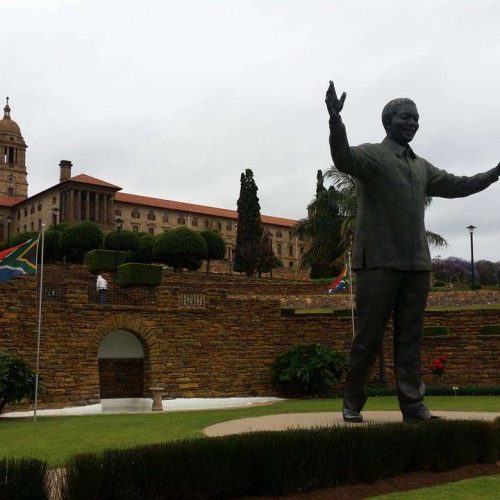
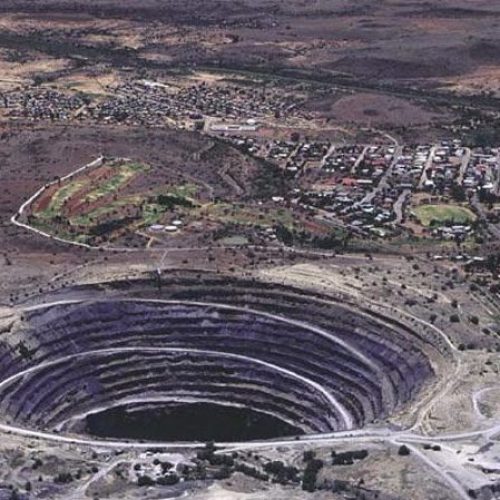
Cullinan Diamond Mine has given the world some of the most remarkable stones ever discovered.
Located in the Victorian town named after it’s most famous resident, Cullinan is a breathtaking 45-minute drive from South Africa’s capital, Pretoria.
Renowned as a source of large, high-quality gem diamonds, including Type II stones, as well as being the world’s most important source of very rare blue diamonds.
Cullinan earned its place in history with the discovery of the Cullinan diamond in 1905, the largest rough gem diamond ever found at 3,106.75 carats was found only a mere 9 m from the surface.
The jewel was named after the mine’s owner and sold to the South African government who presented it to King Edward VII on his 66th birthday. The largest diamond the world has ever known was cut into nine major stones and approximately 96 smaller diamonds.
Many of the world’s most famous diamonds herald from Cullinan, and it continues to produce world-class diamonds.
Since the discovery of diamond pipes in the world, it was established that the Cullinan Diamond Pipe is the oldest pipe in the world.
This is the only working diamond mine in the world that allow visitors the opportunity to visit underground operations.
Join us on either the surface tour or a underground tour of the mine.
About Underground Tour
🎯After being collected from your Hotel we make journey to Cullinan.
🎯Tourists are fitted into safety clothes and equipment
🎯Starting in the display room with a 10 min introduction video.
🎯Viewing replicas of famous diamonds.
🎯Mock-up tunnel-guide explains construction of tunnels underground.
🎯Transported to mine entrance.
🎯Heading 763 m underground in a mine lift to view the following Admin offices, workshop, rest area, refuse bay.
🎯Loading and tipping of ore, crushing ore, conveyor belt transporting ore, and back to surface.
🎯Ending the tour with a lookout of the big hole.
🎯After finishing the underground tour of the mine, you will get the opportunity to visit the Cullinan Diamond Mine Jeweler for an unforgettable diamond and jewelry shopping experience.
About Cullinan
Cullinan Diamond Mine, originally owned by Sir Thomas Cullinan in 1903.
Owned by a three way partnership consortium, lead by London-listed group Petra Diamonds, black economic empowerment group Thembinkosi Mining Investments and Saudi-based investment company Al Rajhi Holdings, the Cullinan Diamond Mine is expected to produce one million carats per year over the next several decades.
Historically, Cullinan Diamond Mine has generated 25% of the worlds diamonds over 400 carats. This famous landmark is the source of the most famous diamond ever unearthed – the 3 106 carat Cullinan Diamond found in 1905. The stone was so large it was cut into nine major pieces and 96 smaller brilliant cut diamonds. These diamonds have since gone on to create their own legends.
The main piece of the polished gem, named Cullinan I, or The Great Star of Africa, was the biggest of the collection and weighed an astonishing 530.2 carats. The Great Star of Africa is displayed in the head of England’s royal Scepter while the Lesser Star of Africa, or Cullinan II weighing 317.4 carats, forms part of the British crown jewels’ Imperial State Crown. Both South African-mined diamonds are exhibited at the Tower of London.
Sir Thomas Major Cullinan remained involved with operations after the significant discovery until 1923 when he resigned as Chairman and as a prominent board member, selling his shares to move on to other ventures. Cullinan died in 1936 but his mine continued to unearth the largest and most famous gems ever known. In 2003, to commemorate the world’s most famous diamond mine, the 100-year-old mine was officially renamed the Cullinan Diamond Mine. To this day, the Cullinan Diamond Mine remains a major diamond producer.
Cullinans Heritage
Cullinan
Polished Gem – 530.20 Carats
The Cullinan Diamond is the world’s greatest diamond ever found. At 3,106.75 carats it remains the largest clean white diamond known to-date. The stone produced nine primary gems and 96 smaller stones. The Cullinan I, or The Great Star of Africa, weighs 530.2 carats and is displayed in the head of England’s royal Sceptre. The South African-mined diamond is exhibited at the Tower of London.
Cullinan II
Polished Gem – 317.40 Carats
Better known as the Lesser Star of Africa, the Cullinan II weighs a remarkable 317.4 carats and is considered the second largest top-quality polished stone in the world. The diamond forms part of the British crown Jewels’ Imperial State Crown and is on display at the Tower of London.
The Golden Jubilee Diamond
Rough Weight – 755.50 Carats | Polished Gem – 545.65 Carats
Discovered in the late 1980′s, The Golden Jubilee is the second largest rough stone produced by Cullinan Diamond Mine. Named after the 50th anniversary ascent of Thailand’s royal couple, King Bhumibol and Queen Sirakit, the golden yellow gem resides at the Royal Museum at Pimmimak, Bangkok.
The Jonker Diamond
Rough Weight – 726.50 Carats | Polished Gem – 126.65 Carats
Johannes Makani, a working hand for 62-year-old poor diamond digger Johannes Jacobus Jonker changed the family’s fortune in 1934 when he uncovered a 726 carat stone. The blue-white Jonker Diamond was bought a year later by famous New York jeweller, Harry Winston. The designer polished the gem into 13 pieces. The Jonker I, the biggest of the 13 pieces.
The Centenary Diamond
Rough Weight – 599.00 Carats | Polished Gem – 273.85 Carats
The discovery of this diamond in 1986 was kept a secret for nearly two years before being announced at the diamond producer’s 100-year celebratory banquet in 1988. The Centenary Diamond was only revealed in its final, modified, heart-shaped form in 1991. The flawless stone is one of the largest top-colour diamonds ever found, surpassed only by the Cullinan I and the Cullinan II.
The Niarchos Diamond
Rough Weight – 426.50 Carats | Polished Gem – 128.25 Carats
Millionaire Stavros Niarchos purchased the Cullinan Diamond Mine’s next discovery in 1954 for his wife at an extravagant $2,000,000. Before the 426,5 carat gem was fashioned into a sizeable pear-shaped stone and two smaller stones by Harry Winston’s Chief Cutter, Bernard de Haan. The craftsman nicknamed the larger of the trio the Ice Queen. He claimed that the rough stone would have been hard to spot in a bucket of ice cubes.
The Taylor-Burton Diamond
Rough Weight – 240.80 Carats | Polished Gem – 69.42 Carats
In 1966, a sizeable 240,8 carat rock was recovered from the Cullinan Diamond Mine. The rough diamond was sent to New York to be polished by jeweller, Harry Winston, into two pieces. The larger 162 carat pear-shaped diamond, which had been set by Cartier into a neck piece, went up for auction in 1972 where legendary star, Richard Burton successfully bid for it. The diamond necklace was to be a 40th birthday gift for his wife, Elizabeth Taylor. The Taylor-Burton is currently owned by Lebanese diamond dealer, Robert Mouawad.
The Premier Rose Diamond
Rough Weight – 353.90 Carats | Polished Gem – 137.02 Carats
The 1978 Premier diamond was acquired by Jacob Mouw from the Mouw Diamond Cutting Works and called the Premier Rose after his wife Rose. The diamond was one of the largest colourless stones in the world before it was cut into three spectacular pieces. The larger of the three, at 137,02 carats retained the Premier Rose name, while the 31,48 carat stone was renamed Little Rose and the 2,11 carat gem was renamed Baby Rose – together, the diamonds are known as the Premier Rose Family.
- ➽Collection from Hotel
- ➽Departs Johannesburg and Pretoria
- ➽Introduction to Cullinan Mine
- ➽Underground
- ➽History of Mine
- ➽Mining Methods
- ➽Geological Processes
- ➽Jewelry Shop
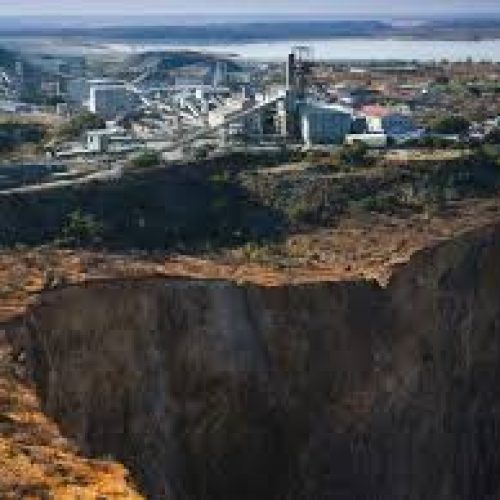
Safari Tours
Dinokeng Game Reserve located in malaria free Gauteng province of South Africa, Dinokeng is home to the famous Big 5 that are all free-roaming. The Game Reserve is one of the youngest upcoming game reserves that covers an area of 18 500 hectares, in the Gauteng area. Within 90 minutes of Jo’burg and just 30 minutes’ drive from Pretoria. Making it ideal for half day and short overnight safaris. Apart from the Big 5 visitors can also spot cheetahs, brown hyenas and a wide variety of Antelopes, Zebras and Giraffes
- ➽Daily departures
- ➽1 x Safari in open vehicle
- ➽Return transport from Hotel
- ➽Small groups
Dinokeng Overnight Safari
- ➽Daily departures
- ➽2 x Safari in Open Vehicle
- ➽Dinner and Breakfast
- ➽Return transport from Hotel
- ➽Small groups
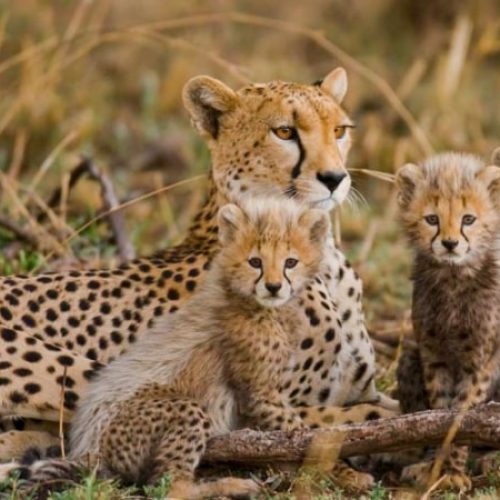
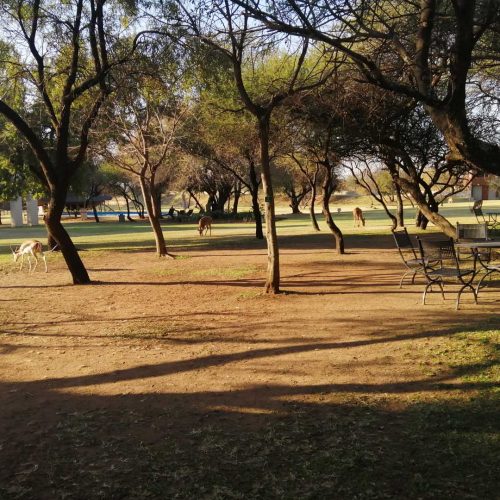
About Pilanesberg
Pilanesberg National Park, or Pilanesberg Game Reserve as it is often called, covers some 55 000 hectares. Pilanesberg has become a sought-after wildlife destination not only for us locals but on the international market as well. Being in a malaria-free area and perched on the eroded remains of an alkaline volcanic crater.
– one of only three such craters in the world.
The volcano crater in which the National Park is situated formed some 1200 million years ago. Apart from its unique size, shape and rock types, the volcanic origin and resultant weathering of the extinct crater has resulted in a wide variety of landscapes. This provides some of the most spectacular scenery in Southern Africa.
Being a fairly new park if compared to the Kruger National Park and other parks around South Africa. Opened in 1979 after one of the largest game trans-locations at that time to reintroduce the long vanished wildlife species back into the area. Pilanesberg was named after former chief of the area Chief Pilane.
Where is Pilanesberg
Pilanesberg is located adjacent to Sun City, in the Bojanala Region of the North West Province of South Africa within a 3 hour drive from Johannesburg.
Situated in a transition zone between the drier Kalahari and the wetter Lowveld making this area ecologically rich in Fauna and Flora from both areas thus providing a wide range of habitats for Big game animals in a malaria free area.
What You Can Expect to See
Because of this, Pilanesberg has the potential to carry a wider variety of game species than any other similar sized game reserve in Southern Africa. Including the BIG 5: Elephant, White and Black Rhino, Buffalo, Lion and the Leopard.
Pilanesbergs potential for supporting rare and endangered species such as Black Rhino, Tsessebe, foot-and-mouth free Buffalo and Wild Dogs are particularly high. As well as all the general plains game, you will find the Brown Hyena, Cheetah, Hippo and the Crocodile in the Pilanesberg National Park.
What We Offer
We offer a variety of trips to Pilanesberg National Park ranging from Day Safaris Trips, 2 Day Safaris Tours, 3 Day Safaris Tours with various accommodation options on offer. Open and Closed Vehicles.
Pilanesberg Day Safari – Open and Closed Vehicle
- ➽Daily departures
- ➽2 x Open game drives
- ➽Light lunch
- ➽Return transport from Hotel
- ➽Small groups
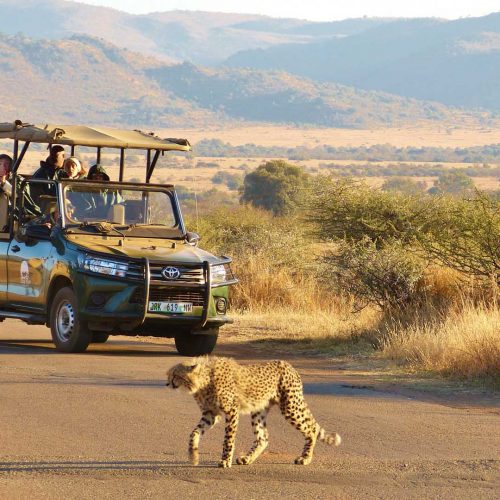
Pilanesberg Day Safari – 2 Closed Vehicle Drives
- ➽Daily departures
- ➽2 x Open game drives
- ➽Light lunch
- ➽Return transport from Hotel
- ➽Small groups
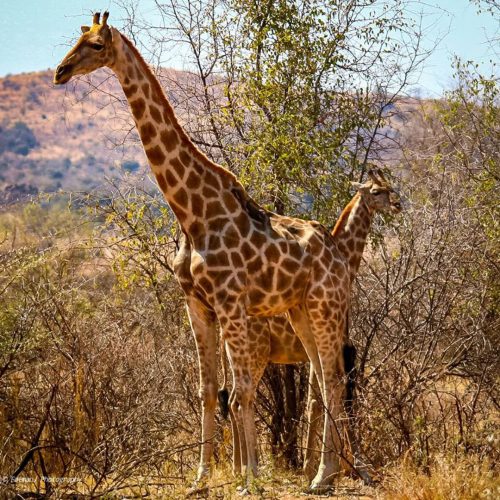
Pilanesberg Day Safari – Full Day Open Safari
- ➽Daily departures
- ➽2 x Open game drives
- ➽Light lunch
- ➽Return transport from Hotel
- ➽Small groups
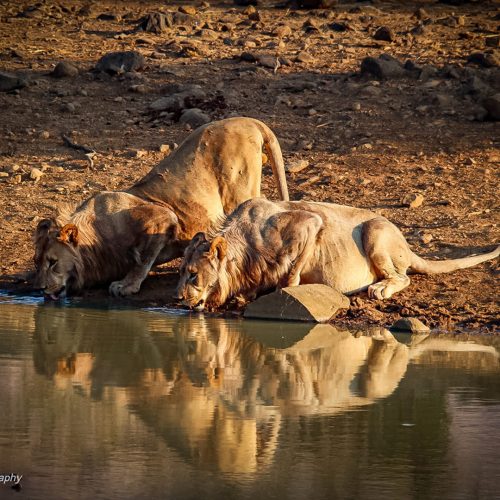
The Kruger National Park situated in the north-eastern part of South Africa, with Mozambique making up the eastern border and Zimbabwe bordering to the north. The park spans across 2 provinces in South Africa the Limpopo province and Mpumalanga province. The park is larger than some smaller countries in Europe and larger than the Serengeti National Park covering an area of nearly 20 000 square kilometres making it one of the largest game reserves in Africa and the largest in South Africa.
The park also being one of the oldest parks in Africa and South Africa, with long history going back thousands of years even before what we know it as today as the Kruger National Park. Established in 1898 as Sabie game reserve by President of the Transvaal Republic Paul Kruger to protect the wild animals in the lowveld from excessive hunting. 31 May 1926 the National Parks act was proclaimed and the Sabi and Shingwedzi game reserves were combined to form the Kruger National Park.
The park is now South Africa’s most popular Safari and tourist destinations attracting more than 1.5 million tourists annually and is one of the worlds most diverse game reserves. Kruger Park is home to the world famous BIG 5: Elephant, Rhino, Buffalo, Lion and Leopard as well to a massive array of fauna and flora including 147 species of mammals, 114 reptile species, 51 snake species, 49 fish species and a massive 508 species of birds. Kruger is also home to an amazing abundance of flora with over 1982 plant species. Will take a real botanist to be able to identify them all.
Footprints in Africa offers you a Kruger experience not to be forgotten ranging from your budget camping options to your more luxurious accommodation options. Combine a Kruger Safari with one of our Overland Tours to experience an adventure of a life time.
3 Day Kruger National Park
4 Day Kruger National Park
- ➽Daily departures
- ➽A – 2 Nights near Kruger
- ➽1 x Sunset Open game drive
- ➽1 x Full day Open game drive
- ➽Meals as per Itinerary
- ➽Return transport from Hotel
- ➽Small groups
- ➽Daily departures
- ➽A – 1 Night Blyde River Canyon
- ➽B – 2 Nights near Kruger
- ➽Panorama Route
- ➽1 x Sunset Open game drive
- ➽1 x Full day Open game drive
- ➽Meals as per Itinerary
- ➽Return transport from Hotel
- ➽Small groups
7 Day Kruger, Swaziland & Durban
- ➽A – 1 Night Blyde River Canyon
- ➽B – 2 Nights Kruger National Park
- ➽C – 2 Nights Swaziland
- ➽D – 1 Night St Lucia
7 Day Swaziland, Mozambique & Kruger
7 Day Swaziland, Mozambique & Kruger
- ➽A – 1 Night Mlilwane
- ➽B – 1 Night Hlane National Park
- ➽C – 2 Nights Mozambique
- ➽D – 2 Nights Kruger National Park
10 Day Swaziland, Mozambique & Kruger
- ➽A – 1 Night Mlilwane
- ➽B – 1 Night Hlane National Park
- ➽C – 2 Nights Mozambique
- ➽D – 2 Nights Kruger National Park
10 Day Kruger, Swaziland & Drakensberg
- ➽A – 1 Night Blyde River Canyon
- ➽B – 2 Nights Kruger National Park
- ➽C – 2 Nights Swaziland
- ➽D – 1 Night St Lucia
- ➽E – 2 Nights Southern Drakensberg
- ➽F – 1 Night Northern Drakensberg
